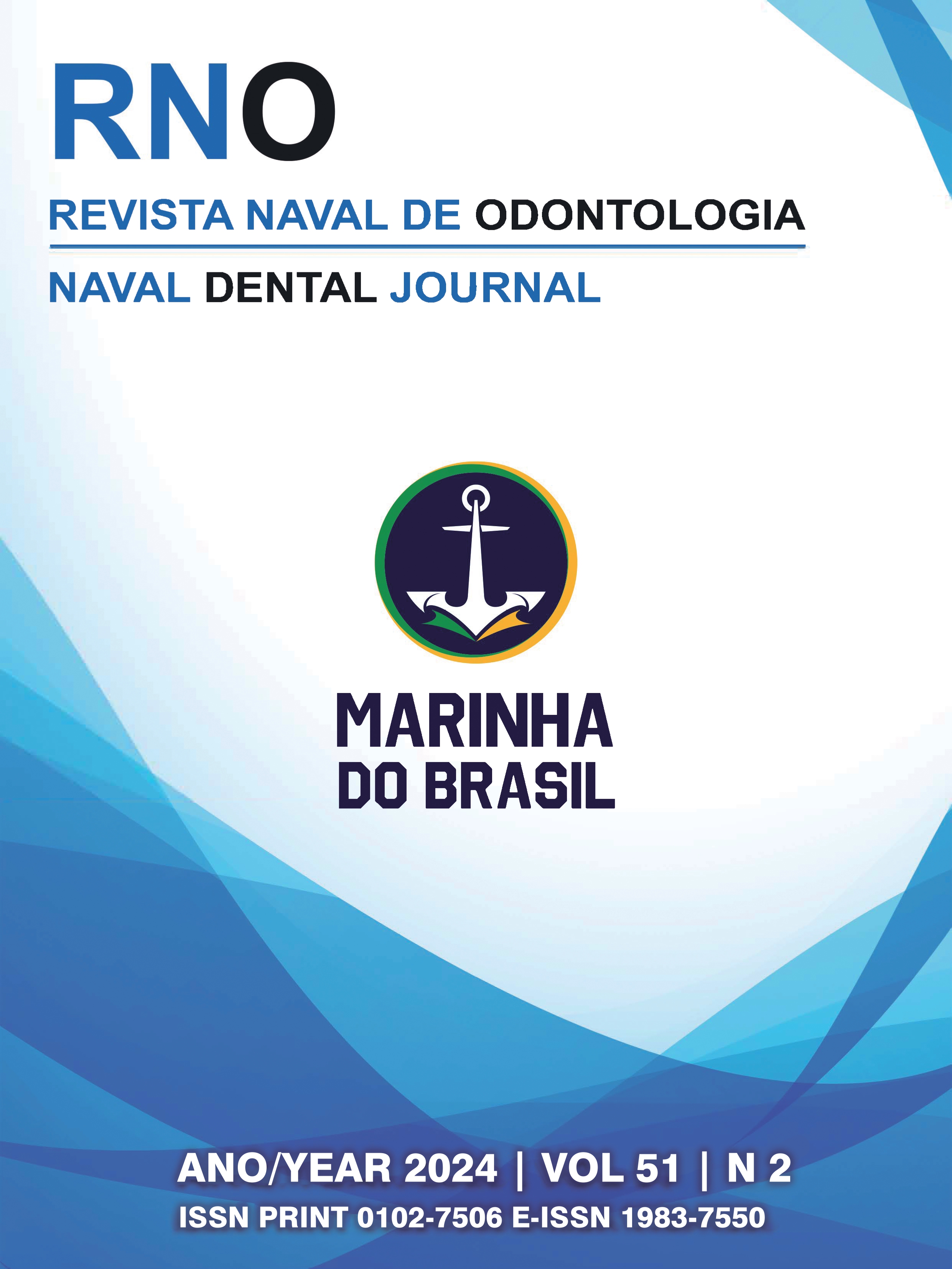GIANT OSTEOMA IN THE ASCENDING RAMUS OF THE MANDIBLE – RADIOGRAPHIC AND TOMOGRAPHIC ASPECTS OF A CASE
Main Article Content
Abstract
Osteoma is an unusual benign tumor of bone origin characterized by proliferation of compact or medullary bone. It is most common in adults between the third and fifth decades of life, with no gender predilection and can be categorized as central, peripheral or extra-skeletal. This study aims to report the case of a patient who was seen at the Odontoclínica Central da Marinha with a final diagnosis of Osteoma with approximately 10 years of evolution. A 58-year-old black woman was referred complaining of pain when chewing on the left side and displacement of the jaw to the right side. On physical examination, facial asymmetry was observed with a well-defined swelling of firm consistency in the parotid region on the left side, in addition to a swollen palate. Radiographically, a rounded and well-defined radiopaque image was observed, affecting the ascending ramus of the mandible, extending to the condyle and coronoid process on the left side. On cone beam computed tomography, a hyperdense, multilobular, well-defined and corticalized image was noted, located on the left side of the mandible, involving the ascending ramus, breaking the lingual cortex and invading the cranial region of soft tissues. The patient underwent an incisional biopsy with a histopathological report compatible with osteoma. Giant osteomas are unusual, mainly in the jaw region. The dentist must be aware of this pathology due to the risk of involvement with syndromes, also because it affects the aesthetics and function of affected patients.
Article Details

This work is licensed under a Creative Commons Attribution-NonCommercial-NoDerivatives 4.0 International License.
References
2.Gawande J, Deshmukh V, Garde JB. A Giant Osteoma of the Mandible. J Maxillofac Oral Surg. 2015; 14(2):460–465.
3.WHO Classification of Tumours Editorial Board. Head and neck tumours. 5th ed. Lyon: International Agency for Research on Cancer. 2022.
4.Ghita I, Brooks JK, Bordener SL, Emmerling MR, Price JB, Younis RH. Central compact osteoma of the mandible: case report featuring unusual radiographic and computed tomographic presentations and brief literature review. J Stomatol Oral Maxillofac Surg. 2021; 122(5): 516-520.
5.Wolf-Grotto I, Nogueira LM, Milani B, Marchiori EC. Management of giant osteoma in the mandible associated with minor trauma: a case report. J Med Case Rep. 2022; 16(1): 8.
6.Singh A, Solomon MC. Osteoid osteoma of the mandible: A case report with review of the literature. J Dent Sci. 2017; 12(2): 185-189.
7.Blackwell MC, Thakkar B, Flores A, Zhang W. Extracolonic manifestations of Gardner syndrome: A case report. Imaging Sci Dent. 2023; 53(2): 169-174.
8.Akkoyunlu M, Bulgurcu E, Delilbasi C, Sabir N. Radiological Features of Rare Non-odontogenic Lesions of the Jaws. Curr Med Imaging. 2024; 20: 1-13.
9.Hasan S. Giant Osteoma of the Mandible: Report of a Rare Case with Review of Literature. Indian J Otolaryngol Head Neck Surg. 2022; 74(Suppl 3): 4535-4542.
10.Demircan S, İşler SC, Gümüşdal A, Genç B. Orthognathic Surgery after Mandibular Large-Volume Osteoma Treatment. Case Rep Dent. 2020; 2020: ID 7310643.
11.Pereira DL, Carvalho PA, Achatz MIW, Rocha AC, Torrezan GT, Alves FA. Oral and maxillofacial considerations in Gardner's syndrome: a report of two cases. Ecancermedicalscience. 2016; 10: 623.
12.Kammoun R, Chaabani I, Ghoul S, Alaya TB. Osteoid Osteoma of the Basilar Border of the Mandible: A Diagnostic Dilemma. Case Rep Dent. 2022; 2022: ID 2179877, 6 páginas.
13.Yeung AWK, Hung KF, Li DTS, Leung YY. The Use of CBCT in Evaluating the Health and Pathology of the Maxillary Sinus. Diagnostics (Basel). 2022; 12(11): ID 2819, 12 páginas.
Tsuha Y, Oshiro H, Mizuta K, Aoki Y, Tamaki T, Wada N, et al. Intraoperative cone-beam computed tomography-guided curettage for osteoid osteoma. Medicine (Baltimore). 2023; 102(51): e36747.

